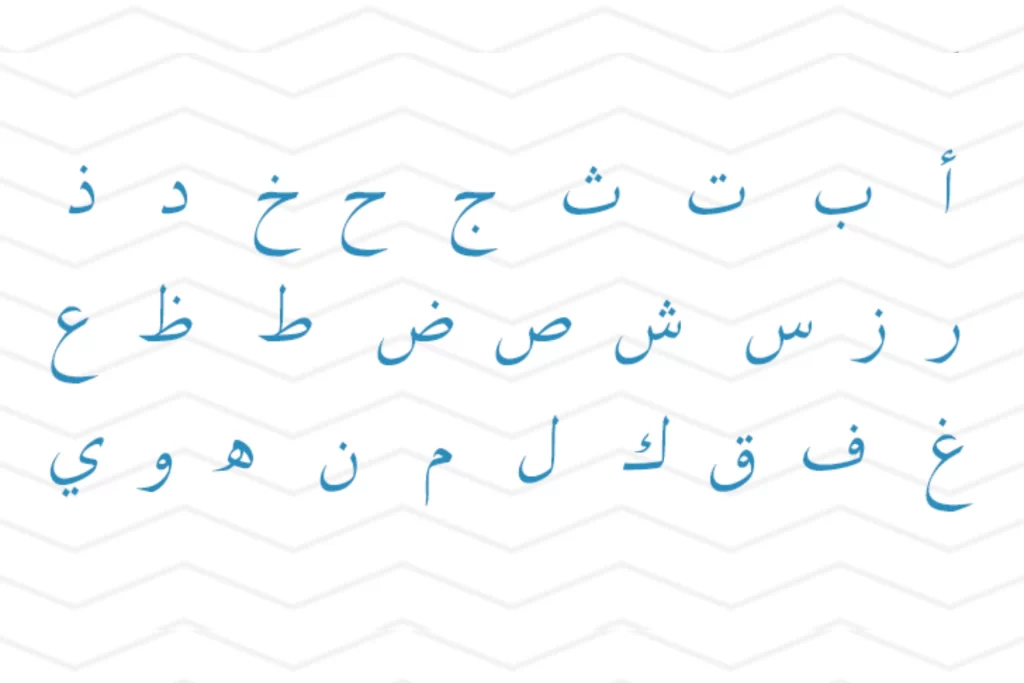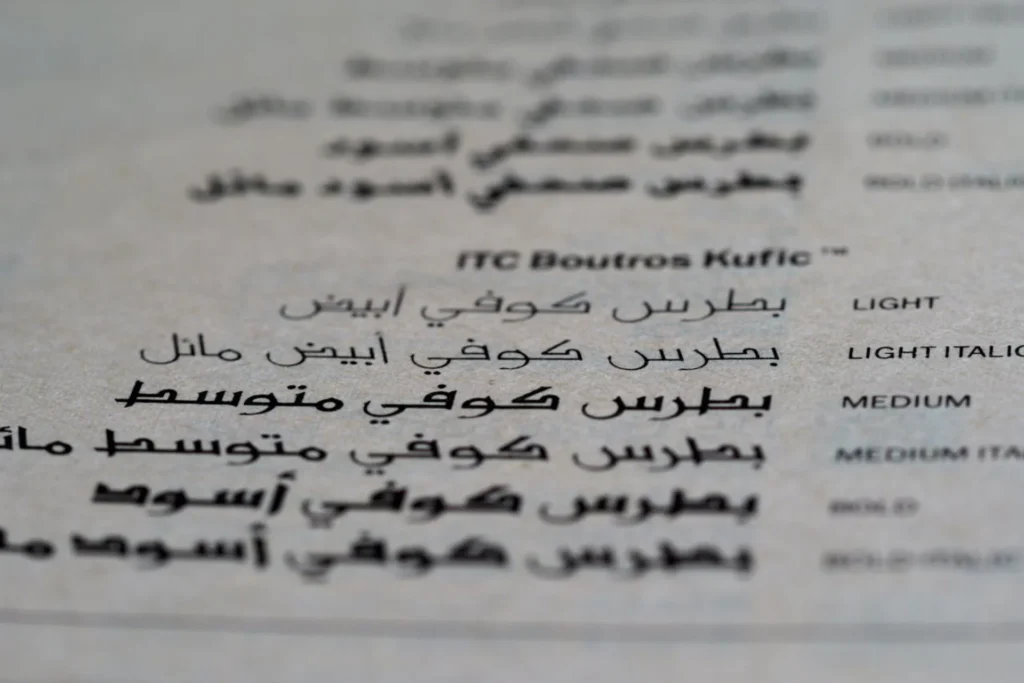The Arabic alphabet, with its rich history and elegant script, holds a special place in the hearts of millions around the world. The letters themselves are a work of art, and when connected, they form a harmonious dance on paper. Understanding and mastering Arabic letter connections is essential for both reading and writing the language fluently.
In this post, we will teach you everything you need to know about how to connect Arabic letters and write them in different positions. You will learn the rules and exceptions of connecting Arabic letters and see examples. By the end of this post, you will be able to write any Arabic word with confidence and accuracy.
Also, in this blog post, we will give you an overview of Arabic letter connections, and why it is essential for your Arabic learning journey. In addition, we will share some tips and tricks on how to connect Arabic letters effectively and avoid common mistakes that some students make when learning Arabic. So, let’s get started!
In this Article:
First Step: Understanding the Arabic Alphabet

The Arabic alphabet is a beautiful and complex writing system, consisting of 28 letters. Each letter has its own unique shape and sound, and there are no silent letters in the Arabic Alphabet, which means that the words are pronounced as written. Learning how to connect Arabic letters is an essential skill for anyone looking to read and write in Arabic. While the concept of connected letters may be unfamiliar to those who are used to the Latin alphabet, it is a fundamental aspect of Arabic spelling. Learn more about the Arabic alphabet in this article.
Why are Arabic Letter Connections Important?
Arabic letter connections are important for several reasons. First, they help you to read and write Arabic correctly and fluently. By knowing how to connect Arabic letters, you can avoid making mistakes and confusion when reading and writing Arabic texts. You can also improve your spelling and pronunciation skills, as well as your comprehension and communication abilities.
Second, they help you to understand the structure and meaning of Arabic words. By knowing how to connect Arabic letters, you can recognize the root letters and patterns that form the basis of Arabic words. You can also identify the prefixes and suffixes that modify the meaning and function of Arabic words. This will help you to expand your vocabulary and grammar knowledge, as well as your analytical and creative skills.
Third, they help you to appreciate the beauty and elegance of Arabic calligraphy. By knowing how to connect Arabic letters, you can admire the artistic and aesthetic aspects of Arabic writing. You can also learn how to create your own Arabic calligraphy, which is a form of art and expression that has a long and rich history and culture. Learn more about the art of Arabic Calligraphy.
What are Arabic Letter Connections?

Arabic letter connections are the way Arabic letters connected together to form words. Unlike English, Arabic is written from right to left, and most of the letters change their shape depending on their position in the word. There are four possible positions for an Arabic letter: initial, medial, final, and isolated.
- Initial: This is when the letter is at the beginning of the word and is connected to the next letter. For example, the letter ب (baa) in the word بريد (bareed, mail) is in the initial position.
- Medial: This is when the letter is in the middle of the word and is connected to both the previous and the next letter. For example, the letter ب (baa) in the word حبيب (habeeb , lover ) is in the medial position.
- Final: This is when the letter is at the end of the word and is connected to the previous letter. For example, the letter ب (baa) in the word حب (hub, love) is in the final position.
- Isolated: This is when the letter is not connected to any other letter, either because it is a single letter or because it is the last letter of a word that cannot be connected. For example, the letter ب (baa) in the word أب (ab, father) is in the isolated position.
Here is a table that shows the four positions of the letter ب (baa) and how it changes its shape accordingly:
| Position | Shape | Example | Meaning |
| Initial | بـ | بريد | |
| Medial | ـبـ | كتابة | Writing |
| Final | ـب | حب | Love |
| Isolated | ب | أب | Father |
As you can see, the letter ب (baa) has a dot below it, which distinguishes it from other letters. Some letters have dots above or below them. For example, the letter ت (taa) has two dots above it, and the letter ث (thaa) has three dots above it, but the letter ي (yaa) has two dots below it.
Another thing to note is that some letters have different forms depending on whether they are connected to the next letter or not. For example, the letter ا (alif) has a vertical form when it is not connected, and a horizontal form when it is connected. Here is a table that shows the two forms of the letter ا (alif):
| Form | Shape | Example | Meaning |
| Vertical | ا | اسم | name |
| Horizontal | ـا | رجاء | hope |
As you can see, the letter ا (alif) has a vertical form when it is at the beginning, and a horizontal form when it is in the middle of a word and connected to the previous letter. However, the letter ا (alif) can never be connected to the next letter, even if it is in the initial or medial position (كتابة kitaba, writing). This is because the letter ا (alif) is one of the six letters that cannot be connected to the next letter, regardless of their position. So, let’s know more about non-connectors and connectors.
Non-connectors and Connectors in the Arabic Letters
Arabic letters can be divided into two main categories: non-connectors and connectors. non-connectors are letters that can only be joined with the letter before them, but not with the letter after/next them, while connectors are letters that can be joined with other letters on both sides.
Non-connectors:
- ا (alif)
- د (daal)
- ذ (dhaal)
- ر (raa)
- ز (zaa)
- و (waw)
Here is a table that shows the Initial and medial positions of the non-connectors and how they do not connect to the letters that come after them:
| Position | Shape | Example | Meaning |
| Initial | ا | الشمس | The Sun |
| Medial | ا | سماء | Sky |
| Position | Shape | Example | Meaning |
| Initial | د | دائرة | Circle |
| Medial | د | نادر | Rare |
| Position | Shape | Example | Meaning |
| Initial | ذ | ذئب | Wolf |
| Medial | ذ | مذكر | Masculine |
| Position | Shape | Example | Meaning |
| Initial | ر | رجل | Man |
| Medial | ر | أرجل | Legs |
| Position | Shape | Example | Meaning |
| Initial | ز | زر | Button |
| Medial | ز | تزلج | Skating |
| Position | Shape | Example | Meaning |
| Initial | و | وردة | Rose |
| Medial | و | ورود | Roses |
As you can see, the non-connectors have the same shape in the initial or medial positions, and they always leave a gap between them and the next letter. This is why they are called non-connectors, because they do not connect to the next letter.
Connectors:
The rest of the Arabic letters are called the connectors, because they can be connected to the next letter, unless they are the last letter of a word. These letters are:
- ب (baa)
- ت (taa)
- ث (thaa)
- ج (jeem)
- ح (haa)
- خ (khaa)
- س (seen)
- ش (sheen)
- ص (saad)
- ض (daad)
- ط (taa)
- ظ (thaa)
- ع (ain)
- غ (ghain)
- ف (faa)
- ق (qaf)
- ك (kaf)
- ل (laam)
- م (meem)
- ن (noon)
- ه (haa)
- ي (yaa)
Here is a table that shows the four positions of the connectors and how they change their shape accordingly:
| Letter | Initial | Medial | Final |
| ب | بـ | ـبـ | ـب |
| ت | تـ | ـتـ | ـت |
| ث | ثـ | ـثـ | ـث |
| ج | جـ | ـجـ | ـج |
| ح | حـ | ـحـ | ـح |
| خ | خـ | ـخـ | ـخ |
| س | سـ | ـسـ | ـس |
| ش | شـ | ـشـ | ـش |
| ص | صـ | ـصـ | ـص |
| ض | ضـ | ـضـ | ـض |
| ط | طـ | ـطـ | ـط |
| ظ | ظـ | ـظـ | ـظ |
| ع | عـ | ـعـ | ـع |
| غ | غـ | ـغـ | ـغ |
| ف | فـ | ـفـ | ـف |
| ق | قـ | ـقـ | ـق |
| ك | كـ | ـكـ | ـك |
| ل | لـ | ـلـ | ـل |
| م | مـ | ـمـ | ـم |
| ن | نـ | ـنـ | ـن |
| ه | هـ | ـهـ | ـه |
| ي | يـ | ـيـ | ـي |
Strengthen your Arabic Spelling and Writing

Properly connecting Arabic letters not only enhances the visual appeal but also improves spelling accuracy. When letters are connected, it becomes easier to distinguish between similar-looking letters and to identify word boundaries. This skill is particularly important when writing in cursive Arabic script, where letters flow seamlessly into one another.
Mastering Letter Connections: Tips and Tricks
To become proficient in connecting Arabic letters, we recommend following these tips:
- Practice regularly: Consistent practice is key to mastering letter connections. Dedicate time each day to write Arabic words and sentences, paying close attention to how the letters connect.
- Use visual aids: Utilize resources such as charts, diagrams, and flashcards to visualize letter connections. These aids can help reinforce your understanding and make the learning process more enjoyable.
- Seek guidance from experts: Our team of experienced Arabic teachers is here to support you on your learning journey. Feel free to ask questions, seek clarification, and receive personalized guidance whenever you need it.
Conclusion:

Arabic letter connections are not only a crucial aspect of language proficiency but also a gateway to appreciating the art and beauty of Arabic calligraphy. By understanding the different forms and positions of Arabic letters, and by mastering the art of connecting them, you can unlock a world of possibilities in your Arabic language journey.

